The True Story Behind the Mattel M16 Rifle
December 28th, 2023
9 minute read
It is inescapable. Anyone with an interest in the AR-15 will inevitably hear about how the Mattel Toy Company produced examples of the M16 service rifle during the Vietnam War. The individuals who repeat this story always describe being an eyewitness to the phenomenon.
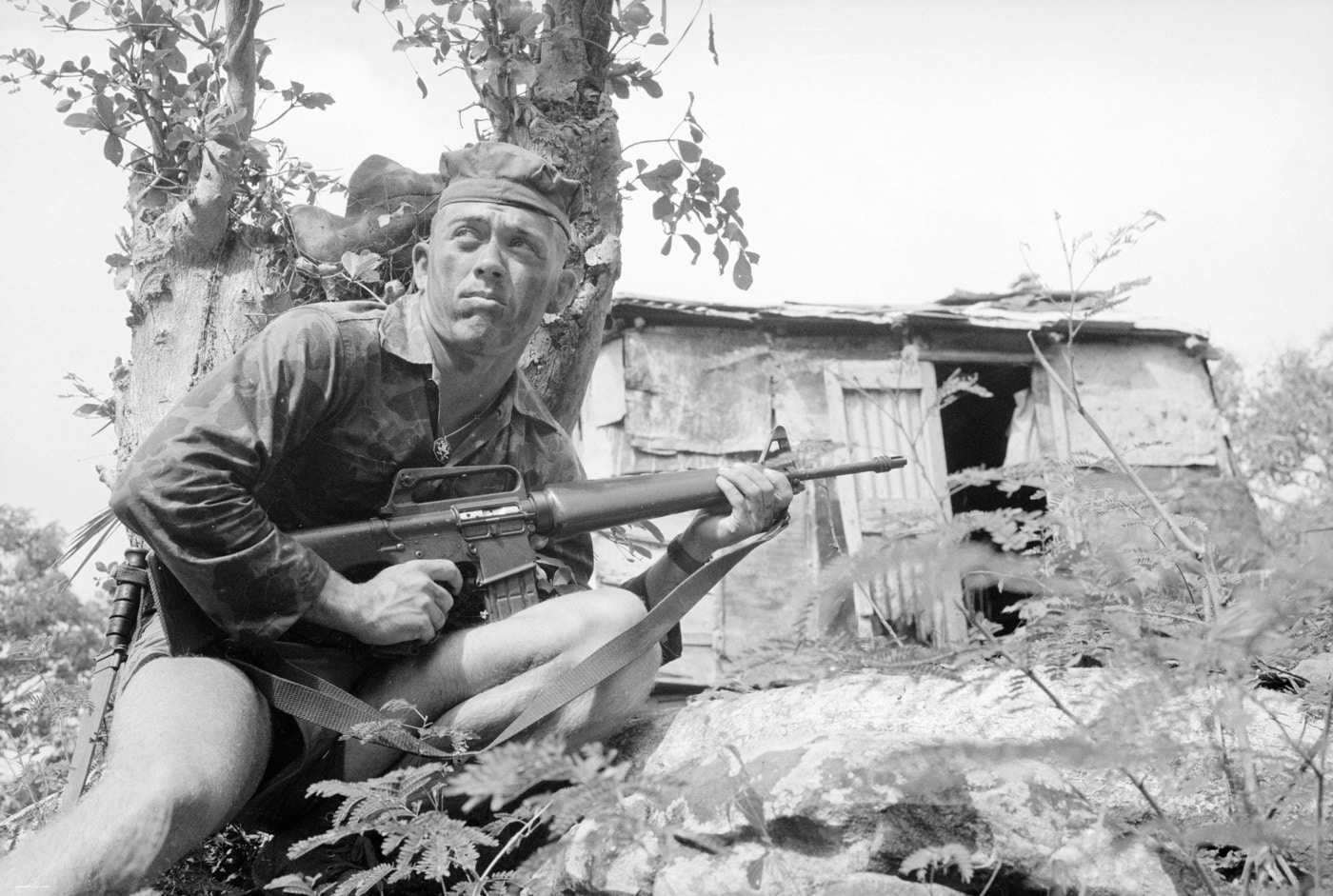
Back in the 80s and 90s, these stories most often described complete rifles made by Mattel, but recent retellings have backed-off of that considerably to claim that the company was subcontracted to produce only plastic furniture. But what is the truth in all this? To understand, we need to consider a completely coincidental series of circumstances that unfolded between 1966 and 1968.
A New Direction
The U.S. military began its relationship with the AR-15 when the Air Force placed an order for the Model 601 version of the rifle in 1960. The U.S. Navy soon followed with an order for its SEALs, and in 1965 the U.S. Army and the U.S. Marine Corps began buying a product-improved version of the rifle under the designation XM16E1. The design would continue to evolve until February 28, 1967, when it was standardized as the M16 for the Air Force and the Coast Guard, and the M16A1 for the Army, Navy and Marine Corps.
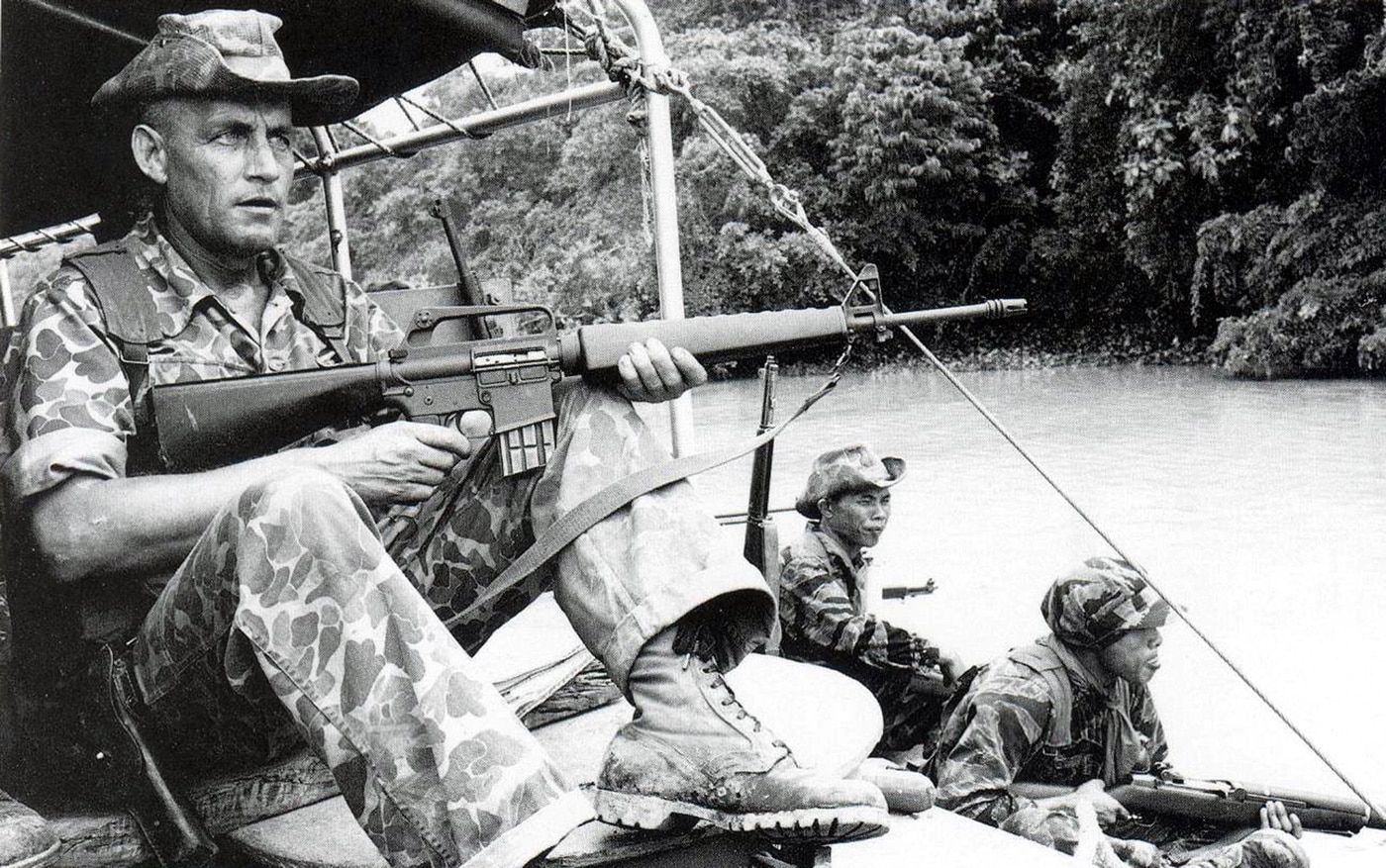
At that point, the time had come for the rifle to enter full-scale mass production, but it was recognized that the rifle’s primary manufacturer alone could not produce it in sufficient quantities to meet the needs of the U.S. military and the overseas allies who would also be using it. For that reason, two additional manufacturers were awarded production contracts — one of which was the HYDRA-MATIC Division of General Motors in Ypsilanti, Michigan. Together, these three manufacturers would produce over a million XM16E1s, M16s, and M16A1s during the Vietnam era. But what about Mattel?
Mattel M16: Reality vs. Myth
The fact is, the Mattel Toy Company did not receive a contract to produce rifles during this era, nor was it brought into production as a subcontractor. So how then did it become a part of this story?
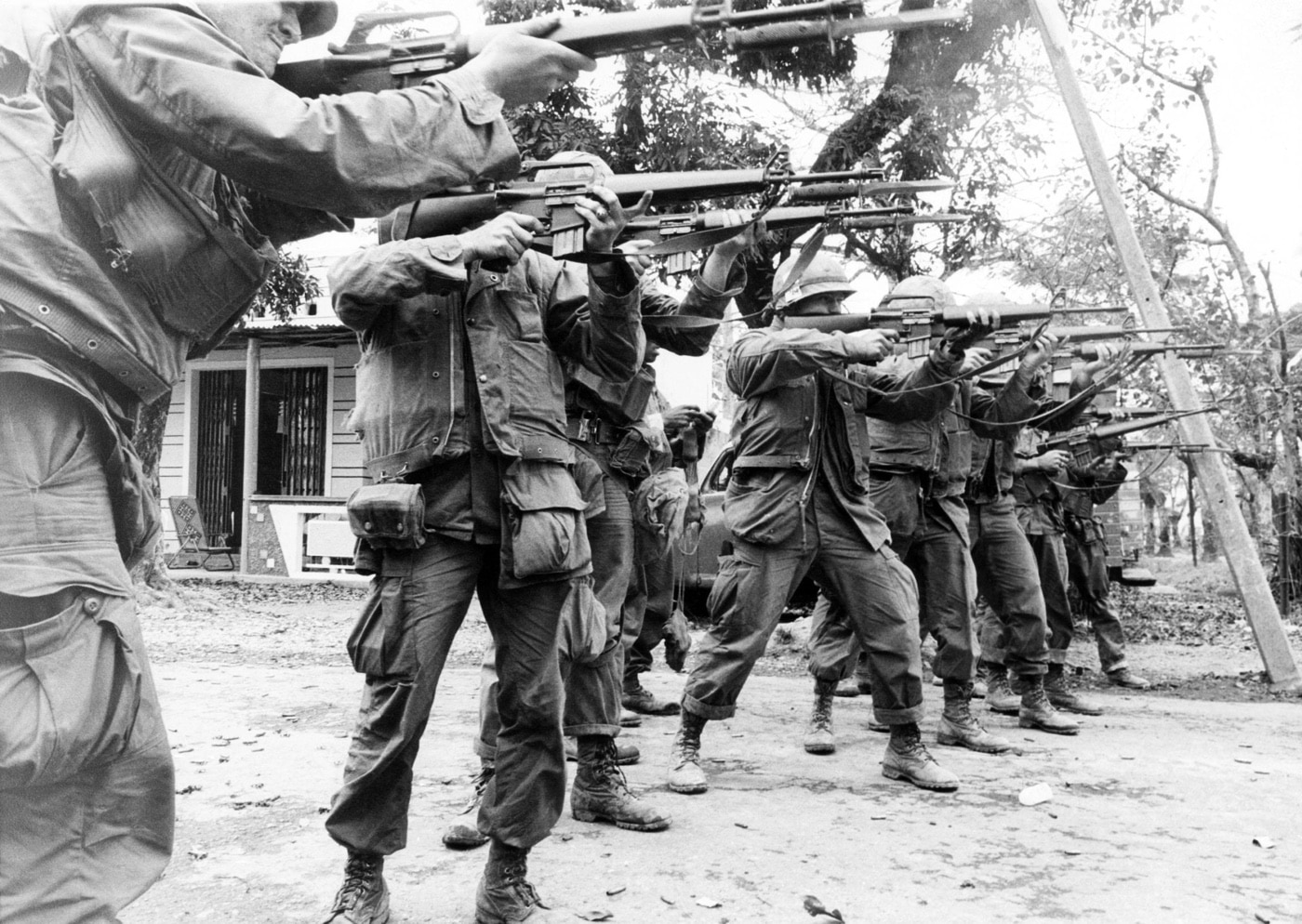
There is anecdotal evidence supporting the idea that troops used to the more substantial size and weight of previous service rifles made of steel and wood thought of the M16 as an insubstantial novelty. The smaller caliber, the lighter weight, and the use of aircraft grade aluminum and bakelite plastic in its construction certainly presented a service rifle unlike anything they had ever seen before.
Rather than recognizing these characteristics of the new rifle as being modern or innovative, some people viewed them as proof that the new rifle departed from the standards of toughness and ruggedness that had defined the rifles that came before it. To them, the M16/M16A1 seemed less like a service rifle and more like a toy.
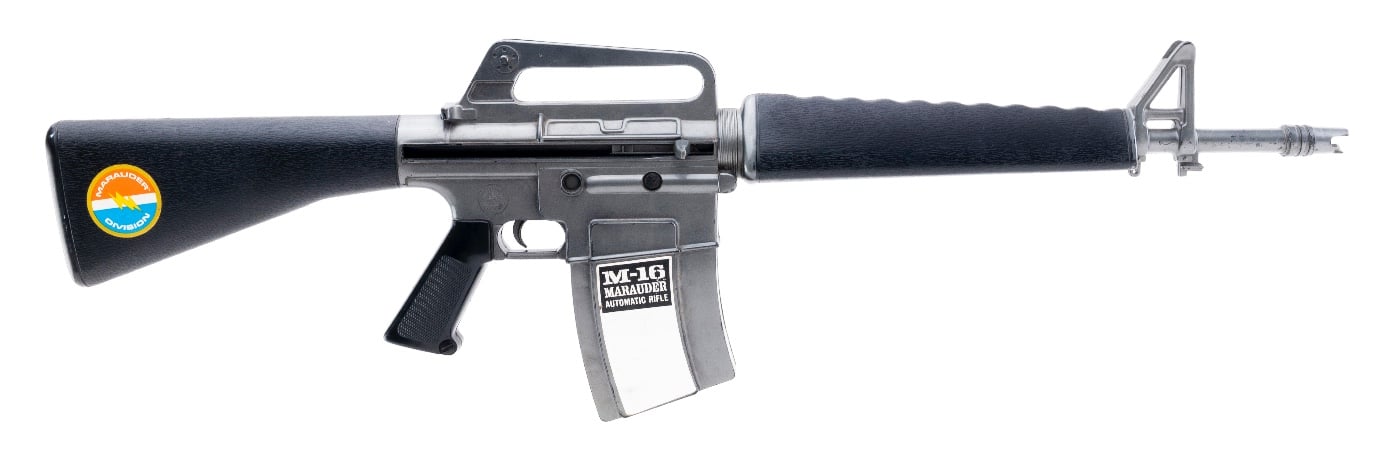
Then in 1966, Mattel inadvertently invited direct comparisons when it released an actual toy closely resembling the M16. Known as the Marauder, it reproduced features of the real gun including a three-prong flash suppressor, a triangular front sight base, triangular handguards, a carry handle and a pistol grip.
Although it was scaled-down and was consequently seven inches shorter than a real M16, the Marauder’s “magazine” was disproportionately large and that was because it housed a small speaker.
One of the toy’s big selling points was that it produced “realistic sound of the actual M-16 rifle” without the use of batteries or caps. By retracting a cocking handle that compressed an operating spring and then pulling the trigger, the gun would produce a simulated fully automatic report using the internal speaker.
The Marauder went above and beyond what most toy guns had to offer in terms of realistic appearance, and that realism meant that it would eventually become useful in a new way.
Mattel Marauder on the Big Screen
In June 1968, Warner Brothers released a motion picture titled The Green Berets starring John Wayne. The film follows a group of U.S. Army Special Forces soldiers being led by Colonel Mike Kirby, played by Wayne, fighting in the Republic of Vietnam against communist Việt Cộng and NVA forces.
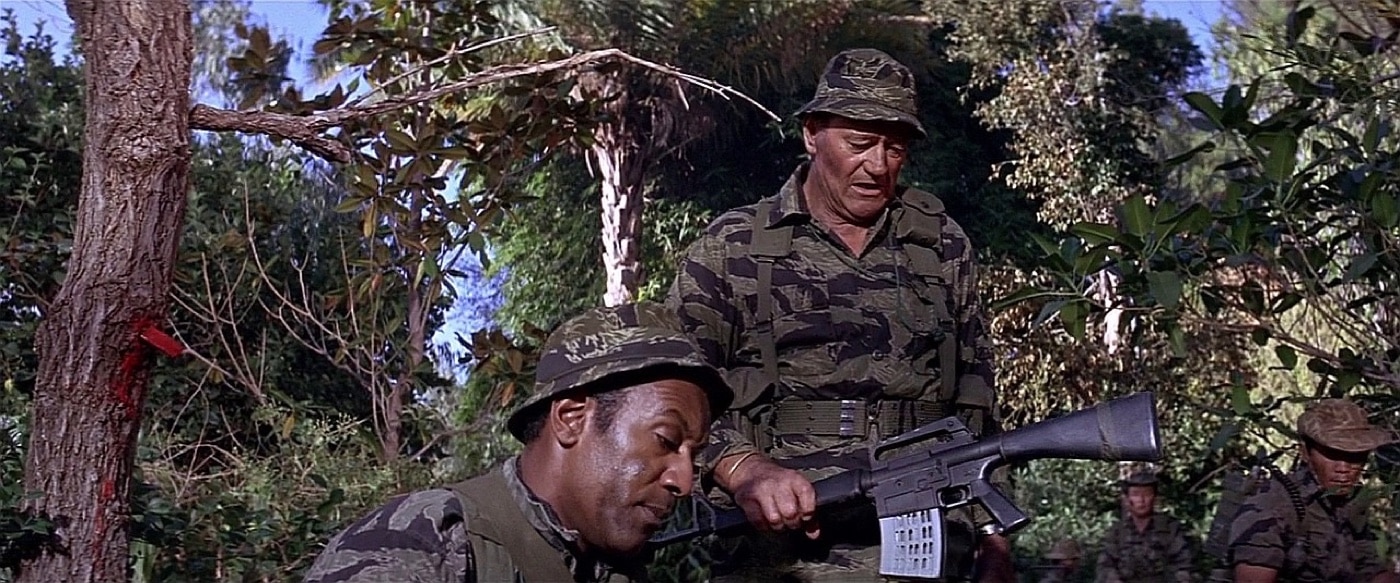
As a result of extensive U.S. Department of Defense technical support, the film features vehicles, uniforms, weapons and equipment of the types being used by the U.S. Army in Southeast Asia to include helicopters, radios, the AC-47 Spooky gunship and of course multiple examples of the M16 rifle.
At the time, the studio armories providing firearms for the film industry did not yet meaningfully have access to the M16, so government support for The Green Berets provided what the project otherwise would not have had, and that is why so many examples of the XM16E1 can be seen throughout the movie. John Wayne himself has one either in hand or slung over his shoulder in just about every scene.
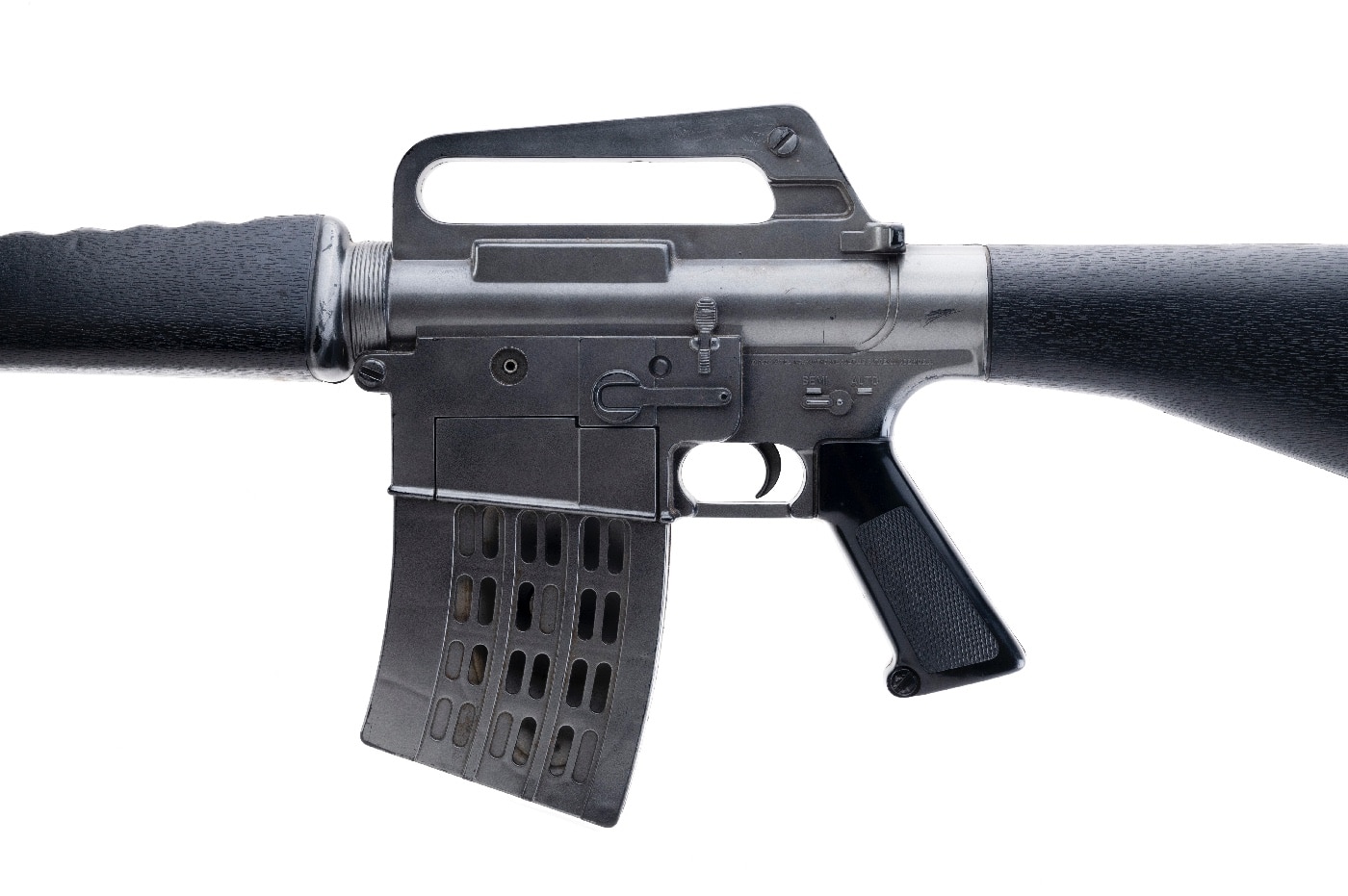
A pivotal action sequence in the film depicts Sgt. Kowalski, played by former NFL linebacker turned screen actor Mike Henry, locked in hand-to-combat with four VC insurgents. Mortally wounded in the struggle, Sgt. Kowalski is dead by the time that Colonel Kirby and the rest of the team reach the scene.
Because they are on an infiltration mission behind the lines in enemy territory, Kowalski’s body has to be left behind. But before moving on, Kirby smashes Kowalski’s M16 against a tree so that the enemy cannot use it. Rather than smashing one of the U.S. Government Property XM16E1s on the set, John Wayne was given a Mattel Marauder as a stand-in, and it shatters spectacularly in a way that an actual M16 never would.
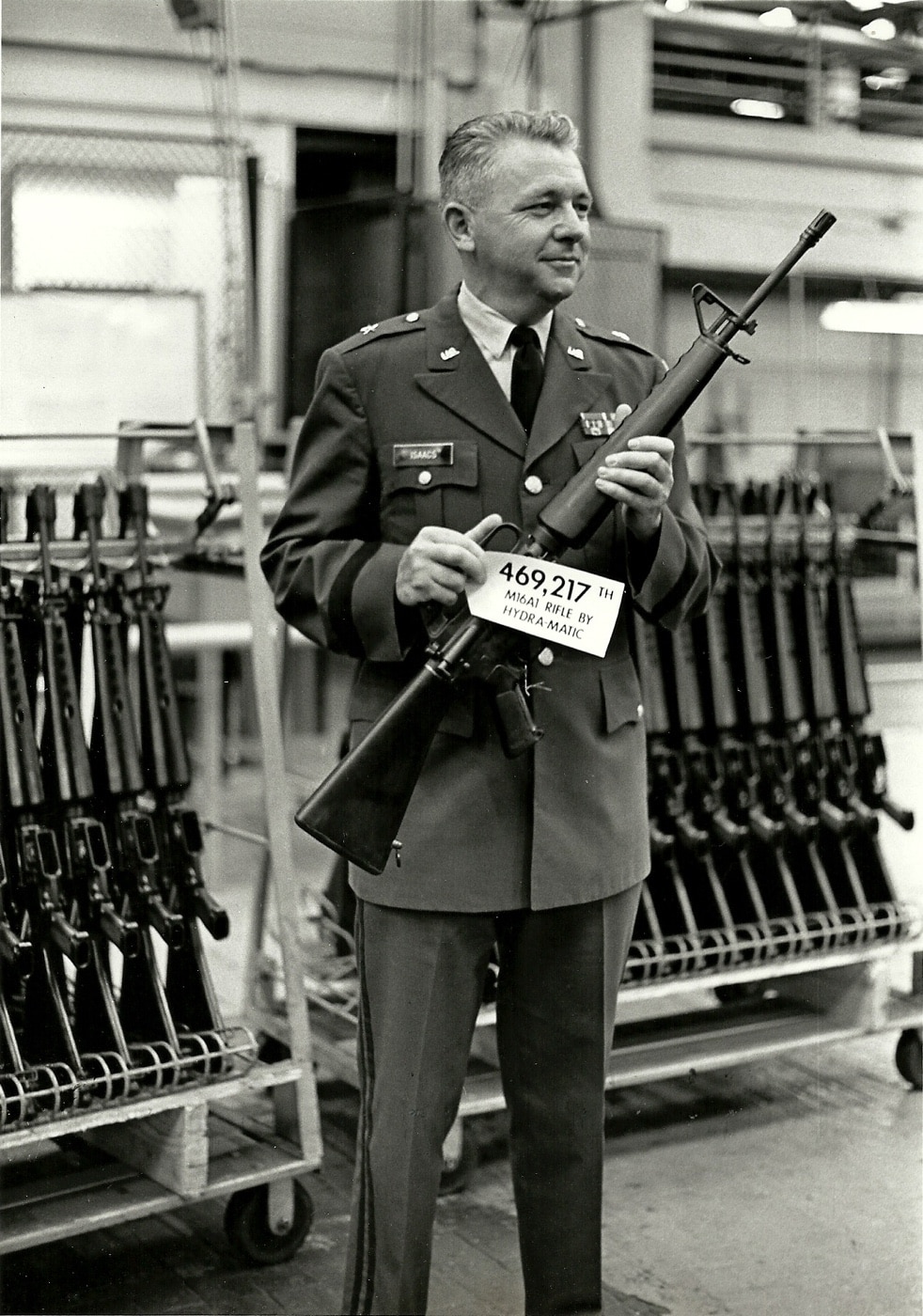
To the average audience member, the fact that a toy was used in the scene instead of a real rifle was not at all obvious, but to the student of small arms, the Marauder’s disproportionately oversized magazine was a dead giveaway. Nevertheless, because of its realistic appearance, the Mattel Marauder had already made its film debut less than a year after it hit the toy stores. At about the same time, it was beginning to creep into another corner of the real world.
Source of the Myth
In January 1968, a U.S. Army Staff Sergeant assigned to the 8th Special Forces Group posed for a photograph in the day room of his barracks at Fort Gulick in the Panama Canal Zone while holding a Mattel Marauder. In so doing, he left behind a clue that might explain how the mythology of the Mattel M16 was born.
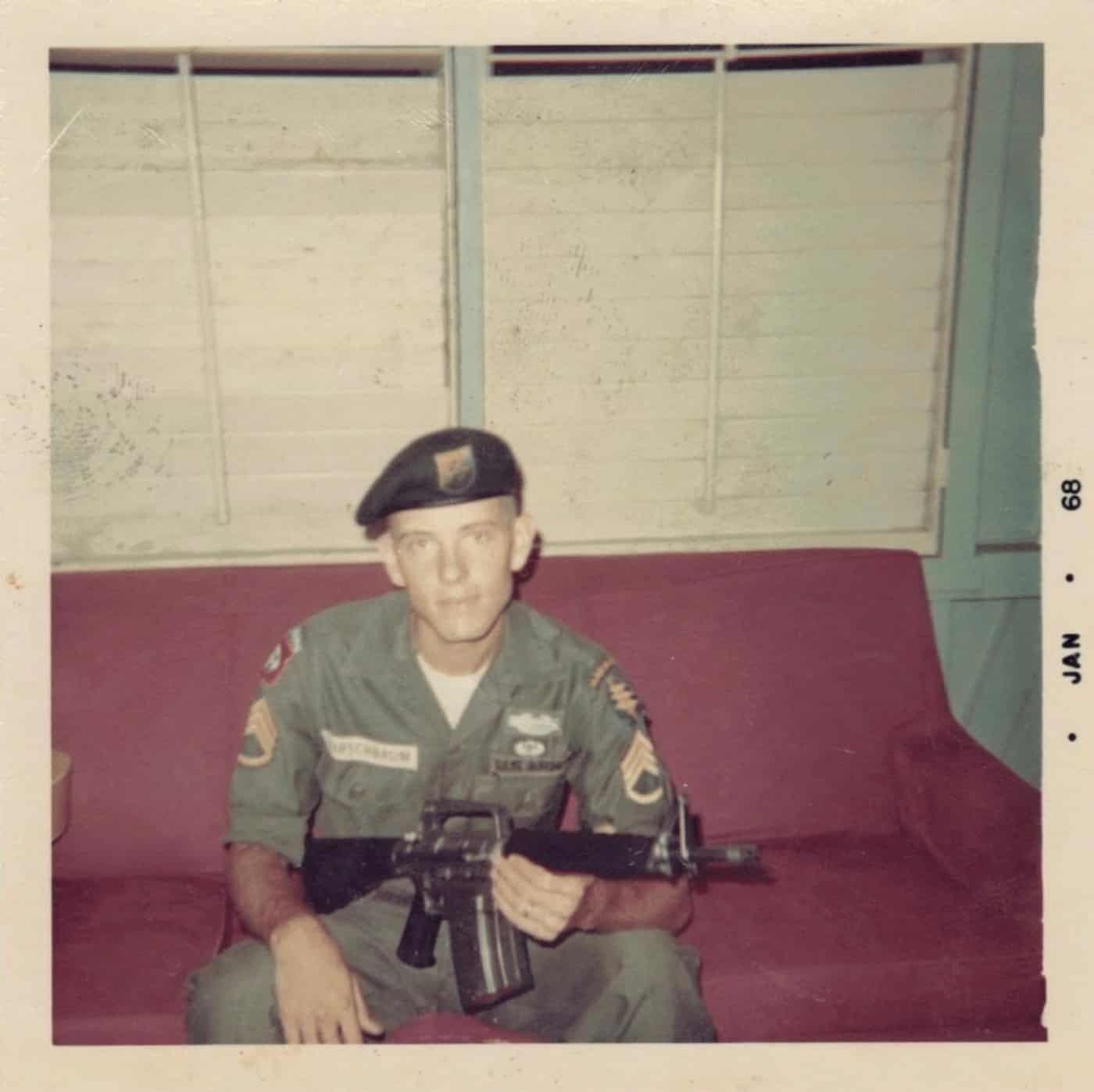
During those early years after the standardization of the M16/M16A1, the U.S. military was scrambling to transition the new rifle into service while also fighting a major overseas war. In addition to that, the American military was simultaneously struggling to maintain force readiness levels in other far-off corners of a troubled Cold War world.
Re-equipping the service branches with a new rifle, a process that was not exactly perfectly planned or coordinated from the start, took place under the most stressful possible circumstances. Lives depended on the M16, so the three companies that actually produced it focused their energies entirely on fulfilling demanding production contracts, not on the development of a training aid.
During the dark days of the World War II mass mobilization, the military made use of hundreds of thousands of non-functioning training rifles that provided new recruits with something that could help them learn the basics of gun-handling without having to use an actual gun. These training rifles could also be used for stateside ceremonial purposes while the real service rifles were overseas doing the fighting.
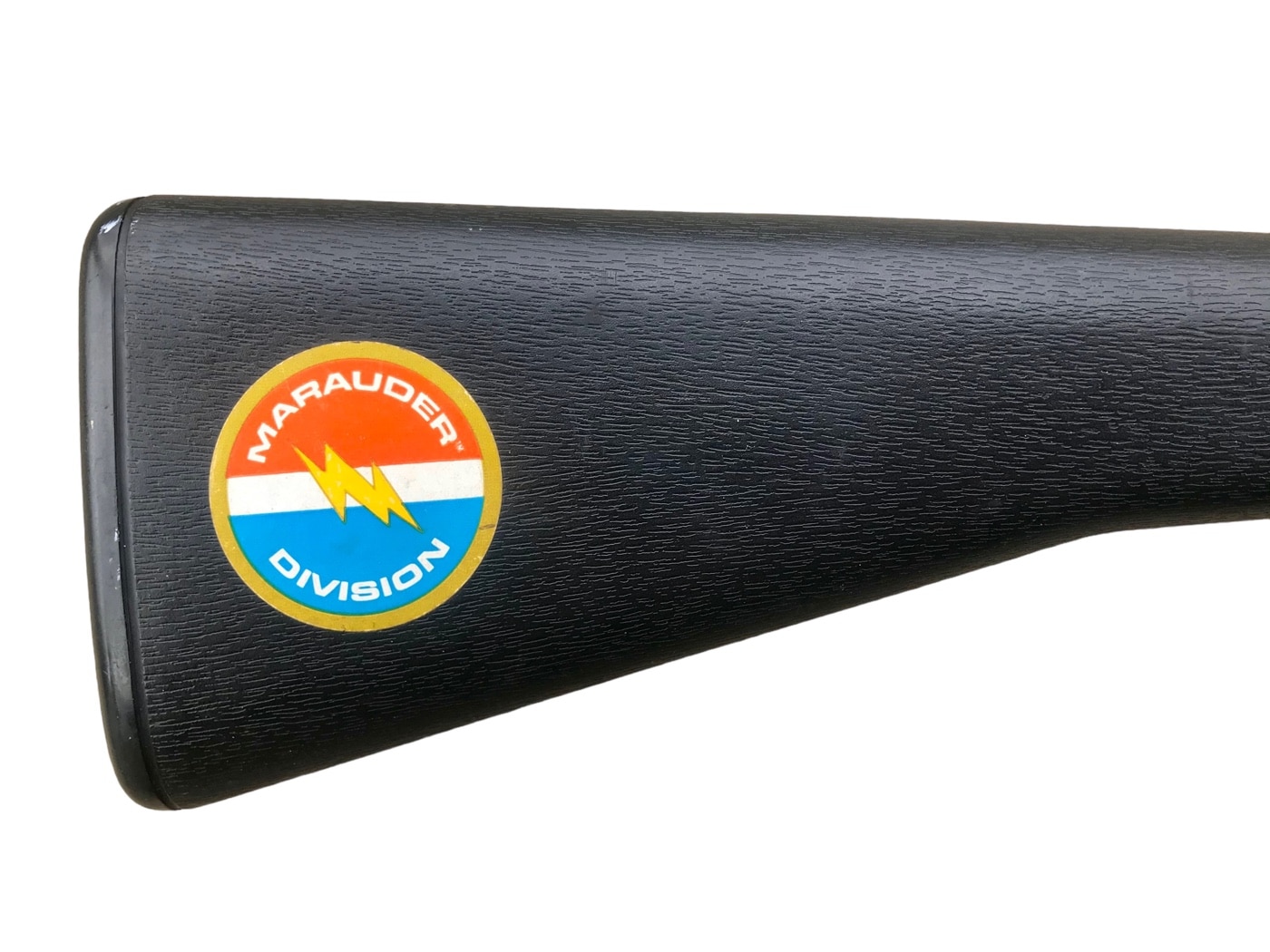
When the M16/M16A1 was adopted in early 1967, there was no training version that could stand-in for bayonet practice or use in an honor guard. Eventually, a “rubber duck” dummy M16A1 was developed, but not until after the war in Vietnam, so during those early years, there was nothing other than the real M16 — until the Mattel Marauder came along.
Simultaneous to the filming of The Green Berets, the Marauder was also used by military members who employed it as a “rubber duck” before the “rubber duck” actually existed. The Marauder was cheap, it was readily available, and it presented a convincing enough appearance that it could pass for the real thing.
At a time when the war effort in Vietnam desperately needed M16 rifles, the Mattel Toy Company began selling a commercial product that looked the part. While it could not be used for bayonet training, it could be used for ceremonial functions or as a decoy, the way that inflatable tanks were used before D-Day.
With a conspicuously displayed Mattel logo just above the pistol grip, the Marauder clearly made an impression on enough service members that word began to spread. Compared to the M1 or the M14, the M16 already looked like a toy to begin with anyway, so when the rumor mill began to buzz about Mattel logos on service rifles, it seemed entirely believable.
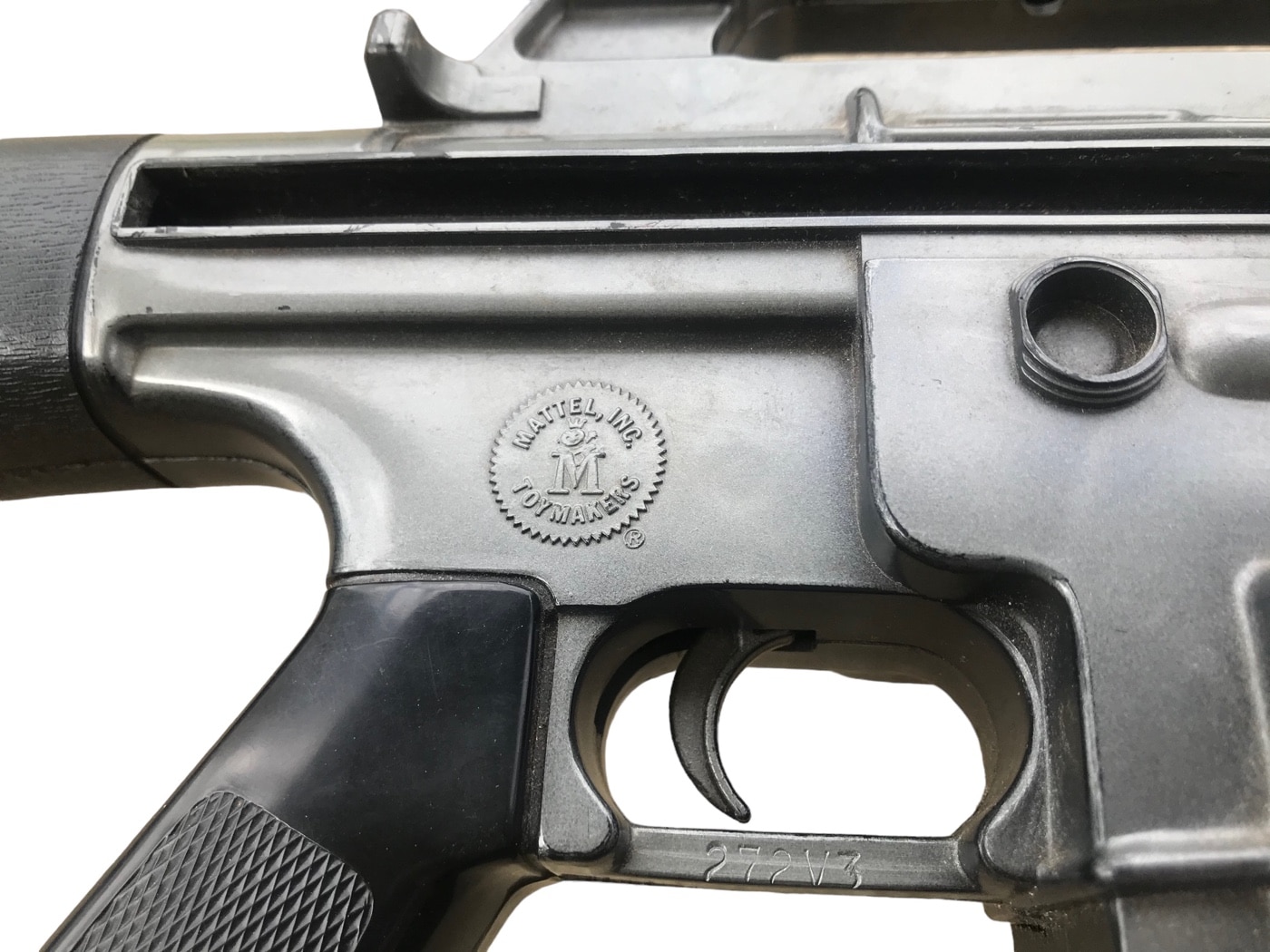
The urban legend then gained momentum when the XM16E1 developed a series of very troubling reliability problems in late 1966 that continued after the standardization of the M16/M16A1 in 1967. Although the reliability problems were gone for good by the Tết Offensive, a bad reputation would hover over the rifle for years to come, and blaming a corrupt military procurement bureaucracy that issued contracts to a toymaker suited the emerging narrative perfectly.
Mattel eventually ended production of the Marauder in 1968 as it did not produce profits comparable to some of the company’s other product lines. That is the point at which the Marauder began to fade into obscurity — neither entirely forgotten nor entirely remembered.
The Truth
Although it was never Mattel’s intention, the little plastic toy gun created a piece of mythology about the Vietnam War that is still with us today, but in order for this to have happened the way that it did, the timing had to be just right.
The myth took root in that perfectly timed moment when the Marauder was in production at the same time that the M16 was experiencing major reliability problems in combat in Vietnam.
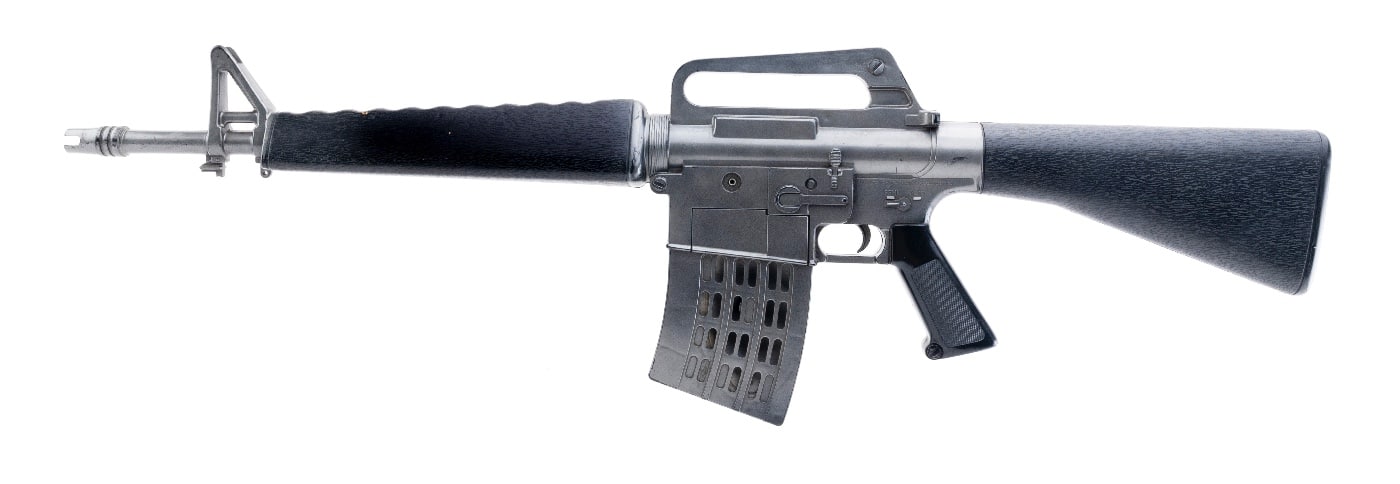
The disillusioned narrative wherein a toymaker was given a contract to produce a problematic service rifle then took its place within a broader cynicism that imagined the Mattel M16 as being a metaphor for the bigger problems in American foreign policy during the 1960s.
The mythology of the Mattel M16 was, in many ways, exactly what we needed to make sense of our costly intervention in Vietnam. This narrative is really nothing more than a coping mechanism that provides a ready explanation for everything that went wrong in Southeast Asia, and even though it had nothing to do with the M16, Mattel was dragged into the middle of it.
So, if you ever encounter someone who testifies to having seen a Mattel M16, be sure to ask them for proof. I wager they will not be able to produce any proof because the Mattel Toy Company had absolutely no involvement whatsoever in the production of the M16 service rifle.
Editor’s Note: Please be sure to check out The Armory Life Forum, where you can comment about our daily articles, as well as just talk guns and gear. Click the “Go To Forum Thread” link below to jump in and discuss this article and much more!
Join the Discussion
Continue Reading
Did you enjoy this article?

 727
727






